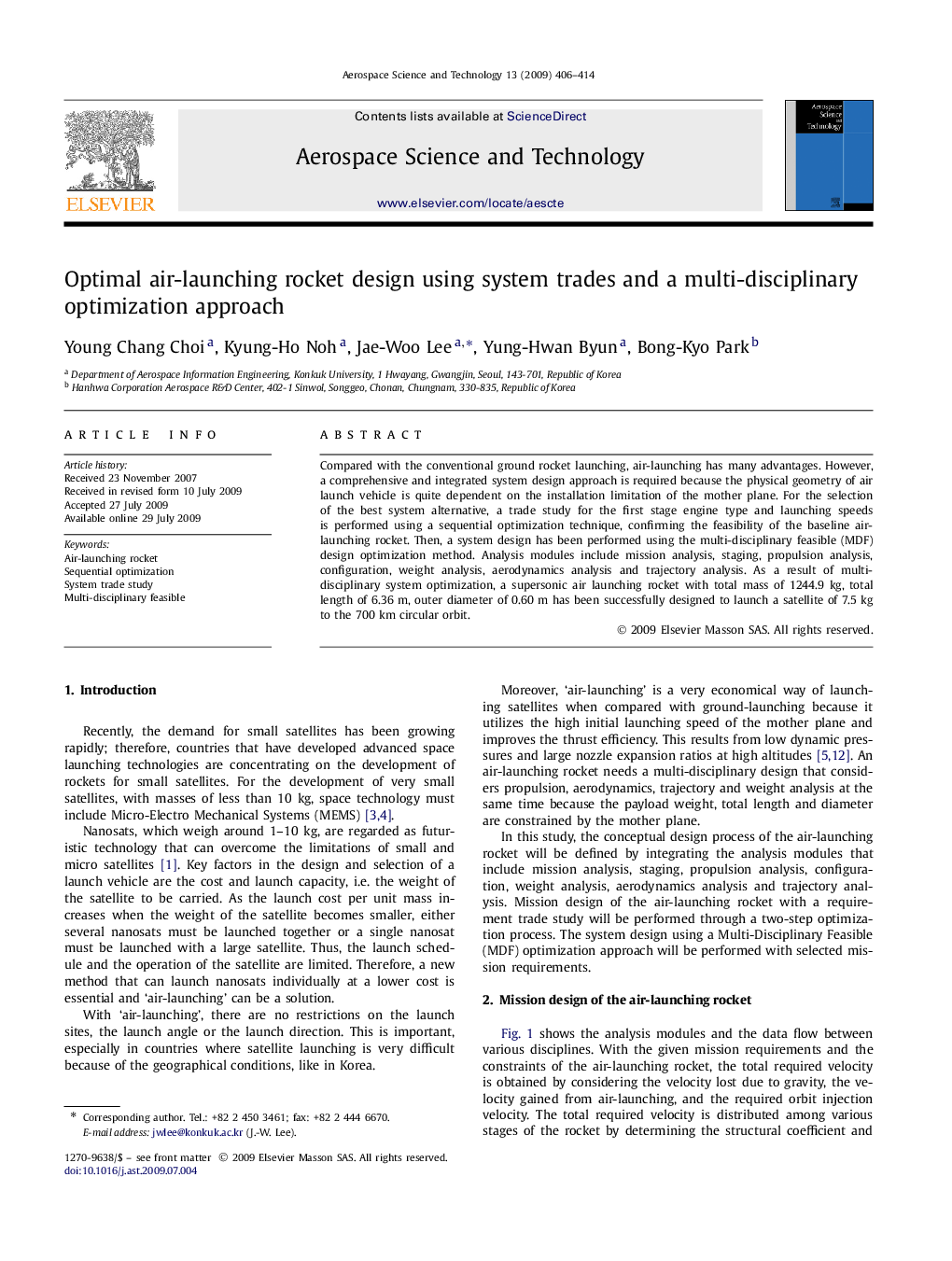| Article ID | Journal | Published Year | Pages | File Type |
|---|---|---|---|---|
| 1718786 | Aerospace Science and Technology | 2009 | 9 Pages |
Compared with the conventional ground rocket launching, air-launching has many advantages. However, a comprehensive and integrated system design approach is required because the physical geometry of air launch vehicle is quite dependent on the installation limitation of the mother plane. For the selection of the best system alternative, a trade study for the first stage engine type and launching speeds is performed using a sequential optimization technique, confirming the feasibility of the baseline air-launching rocket. Then, a system design has been performed using the multi-disciplinary feasible (MDF) design optimization method. Analysis modules include mission analysis, staging, propulsion analysis, configuration, weight analysis, aerodynamics analysis and trajectory analysis. As a result of multi-disciplinary system optimization, a supersonic air launching rocket with total mass of 1244.9 kg, total length of 6.36 m, outer diameter of 0.60 m has been successfully designed to launch a satellite of 7.5 kg to the 700 km circular orbit.
